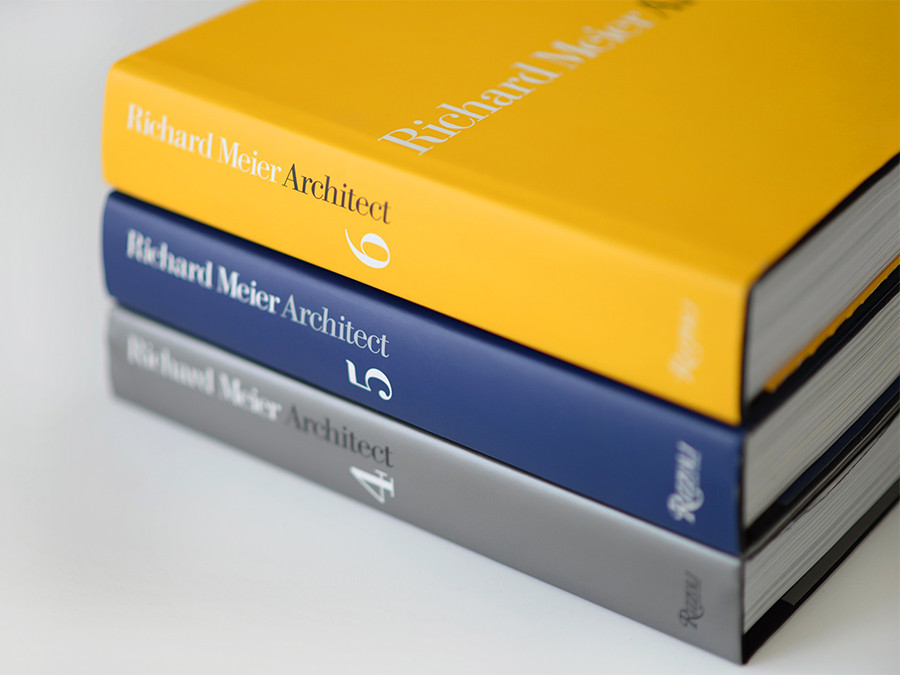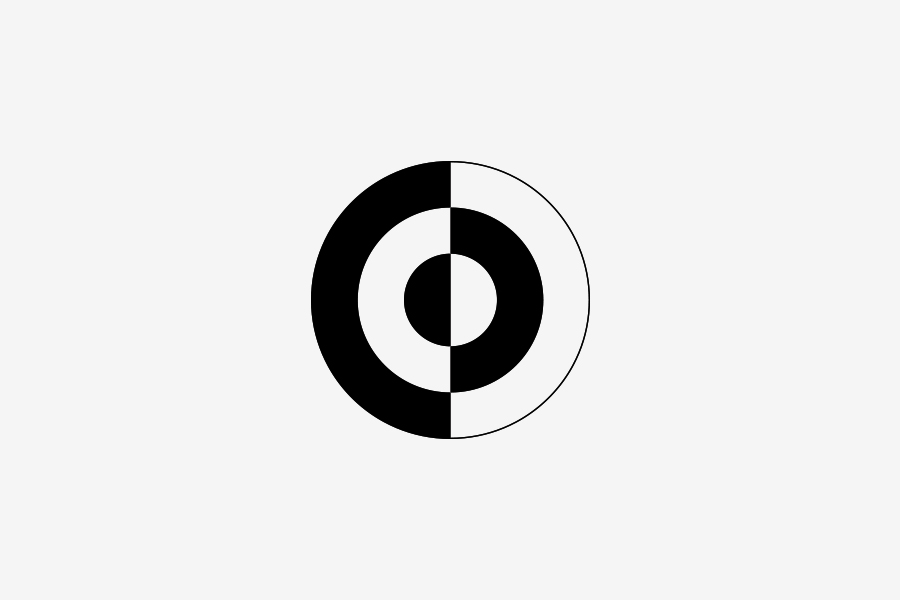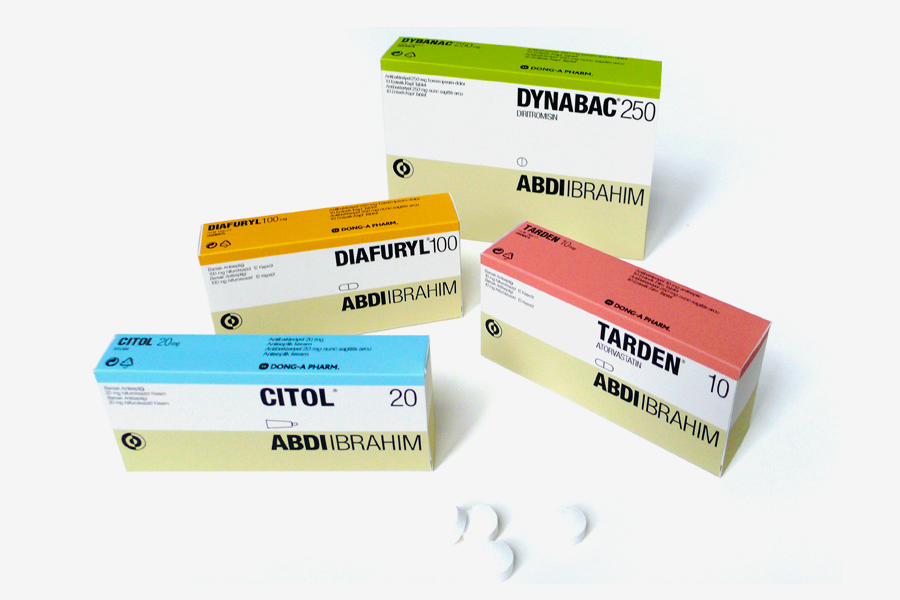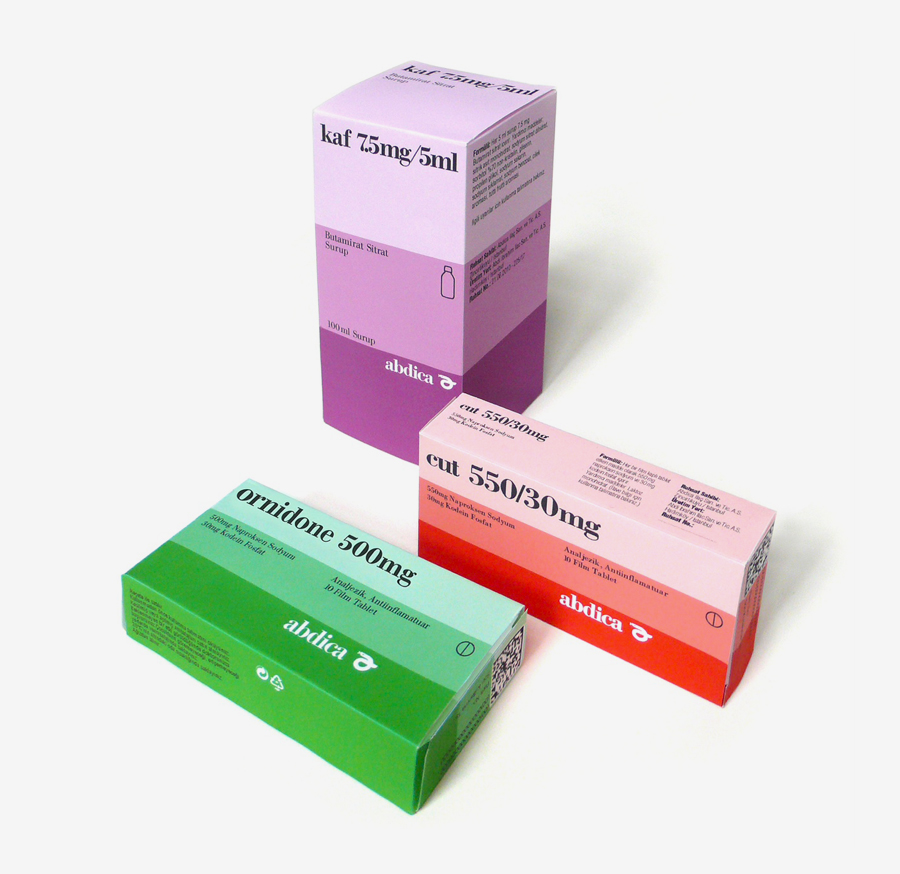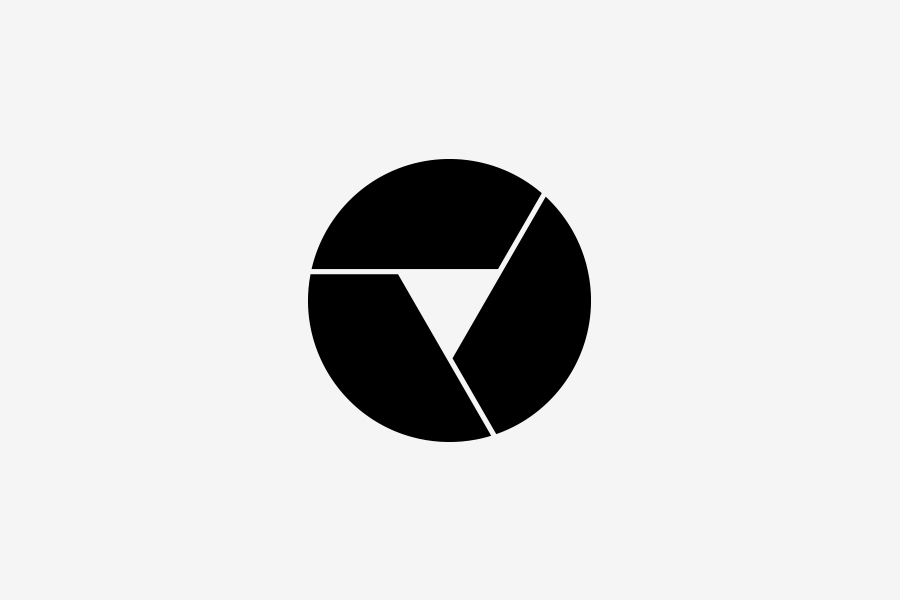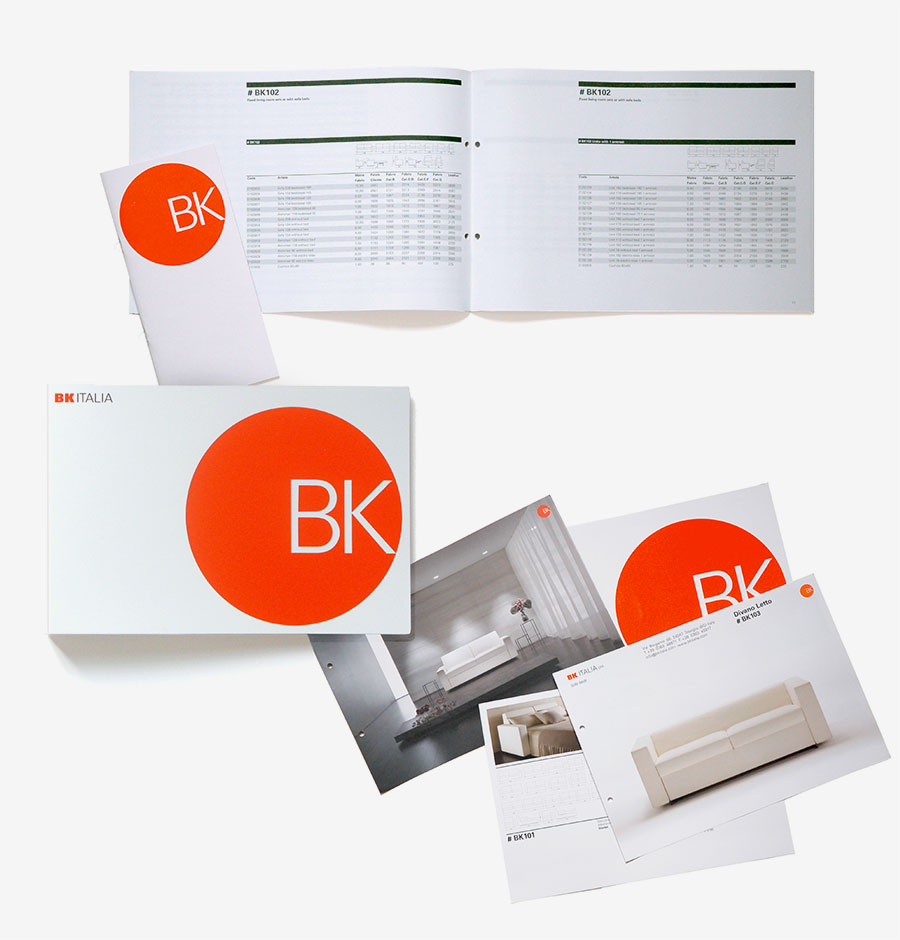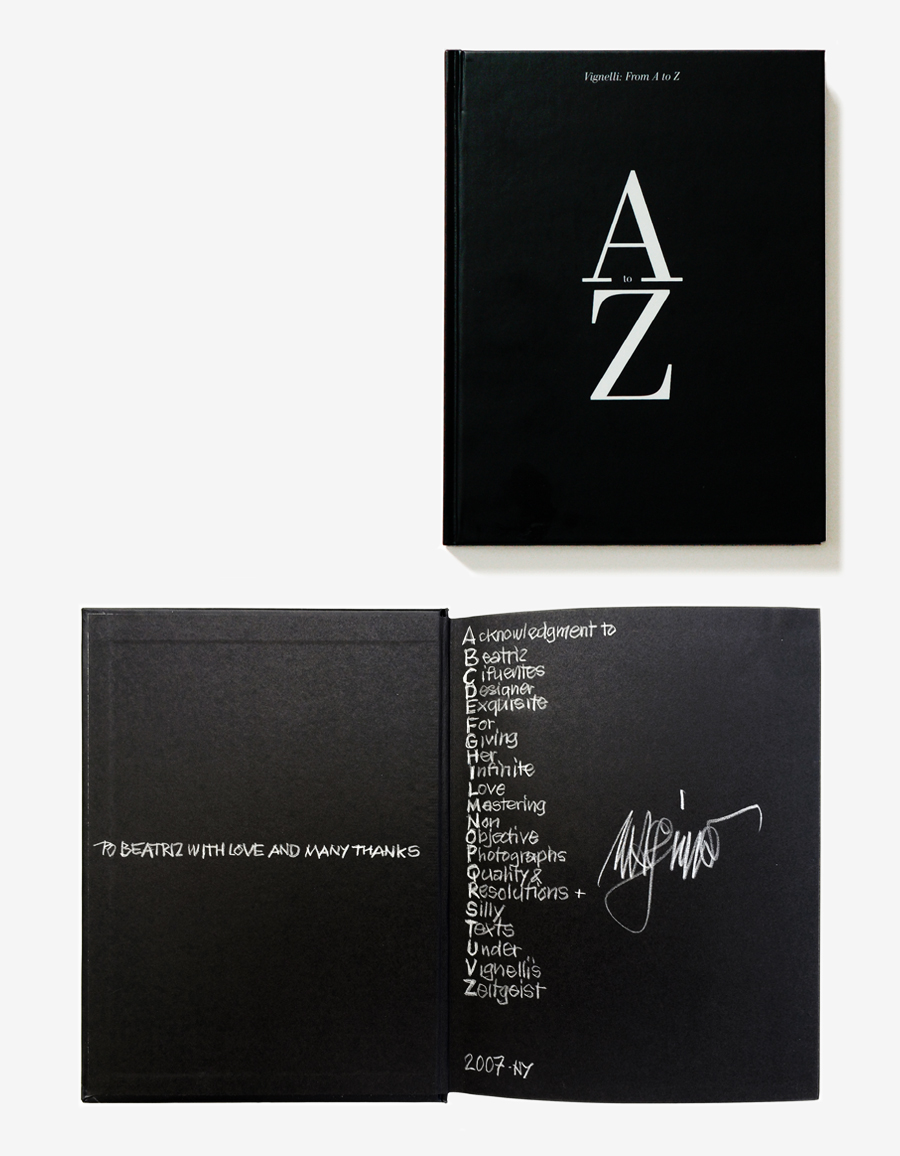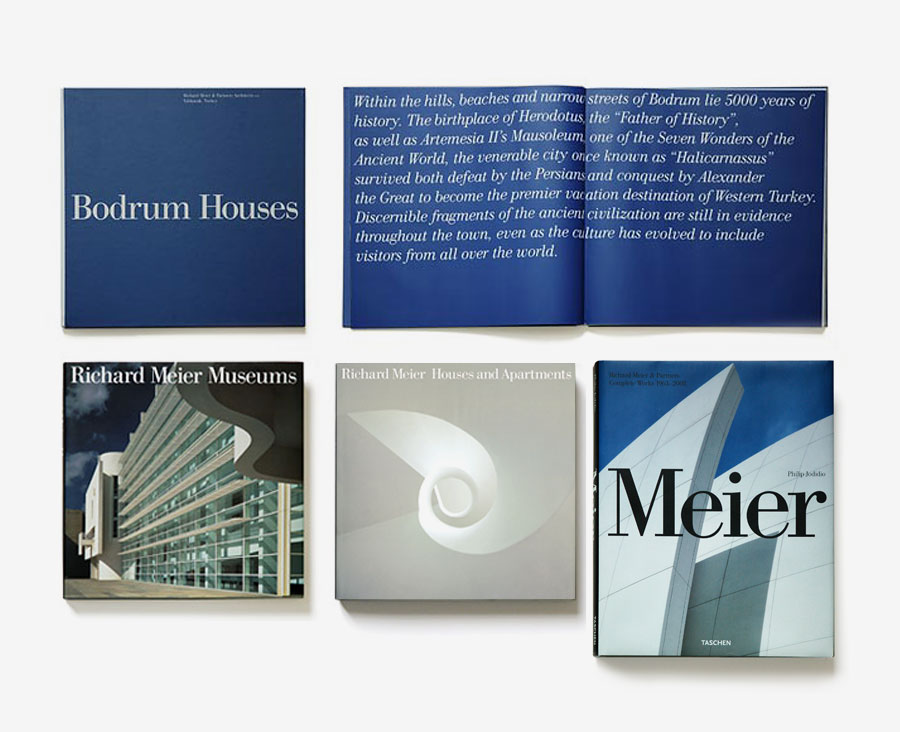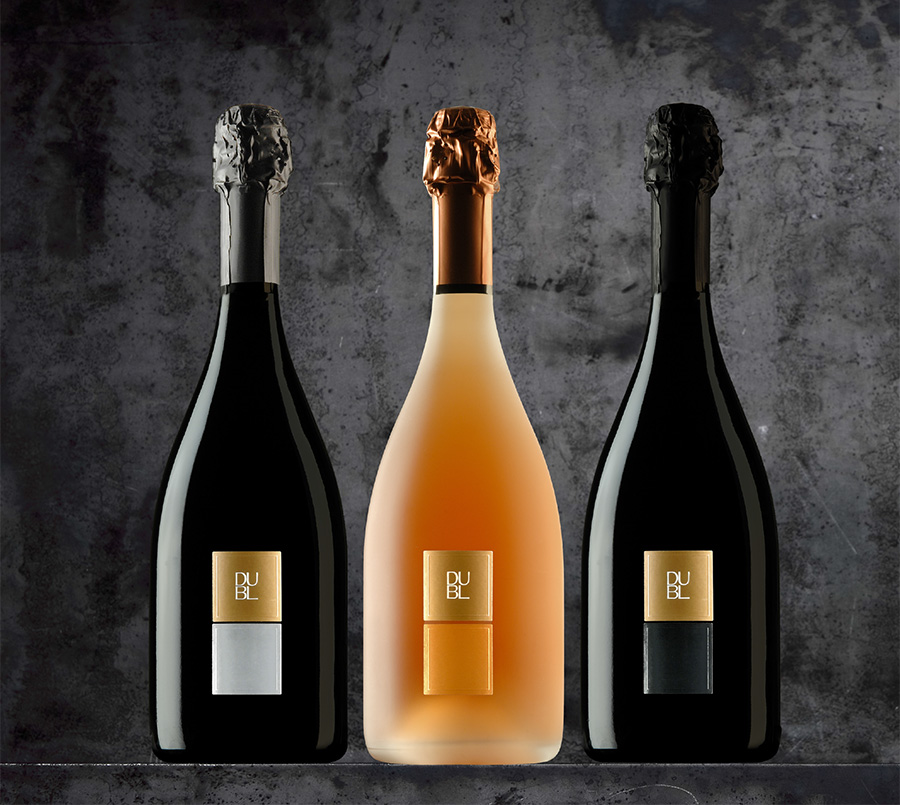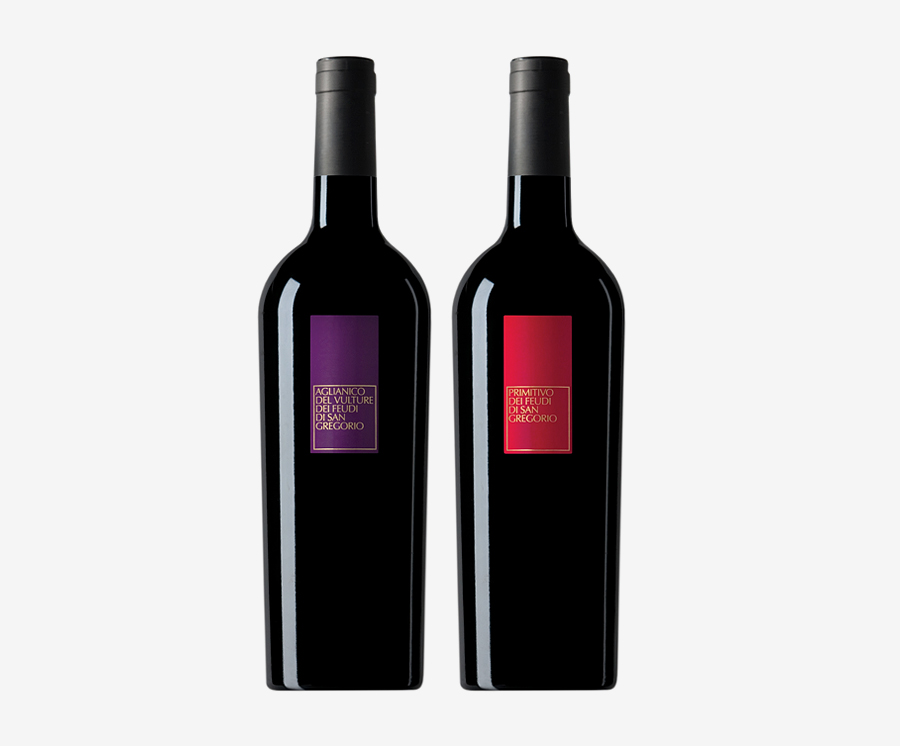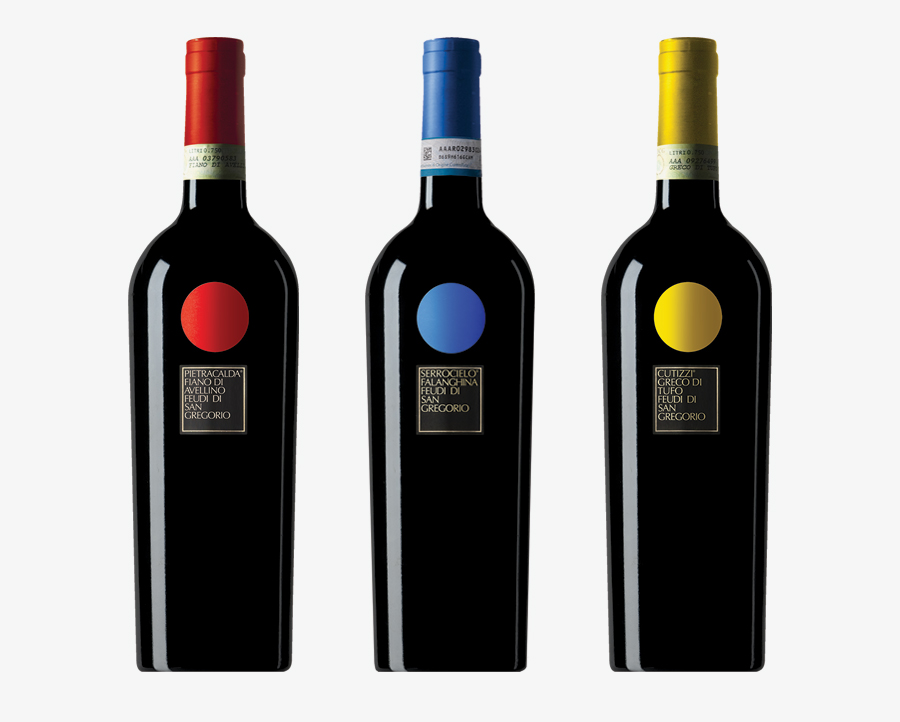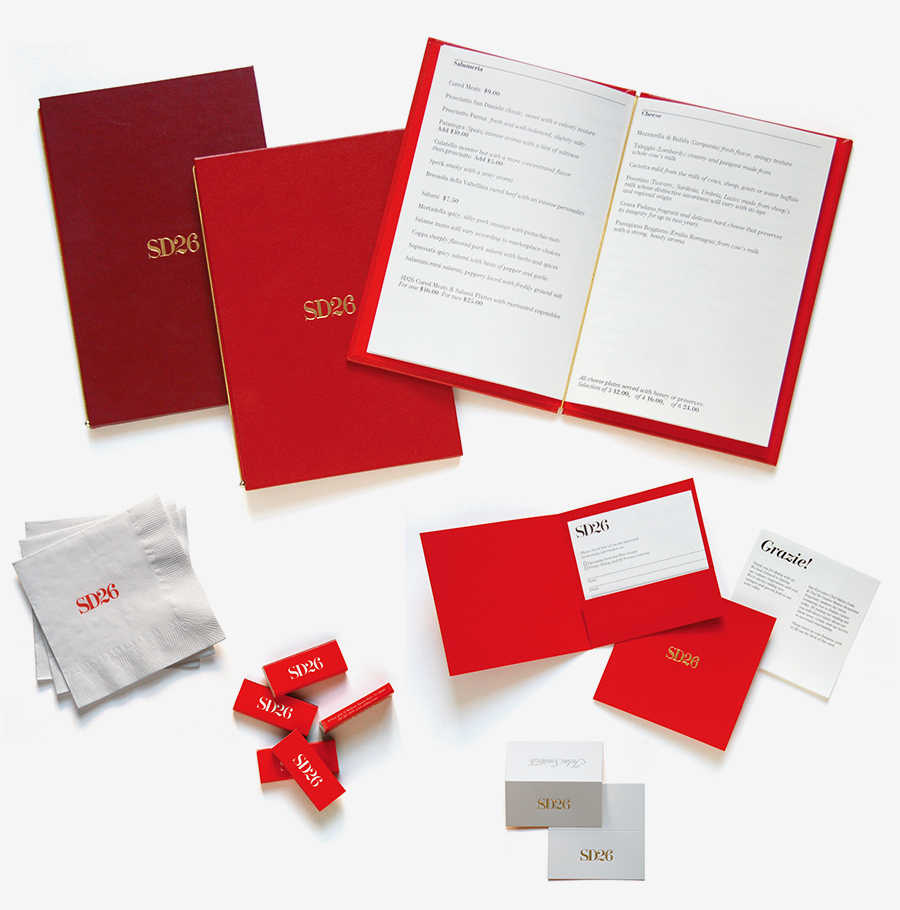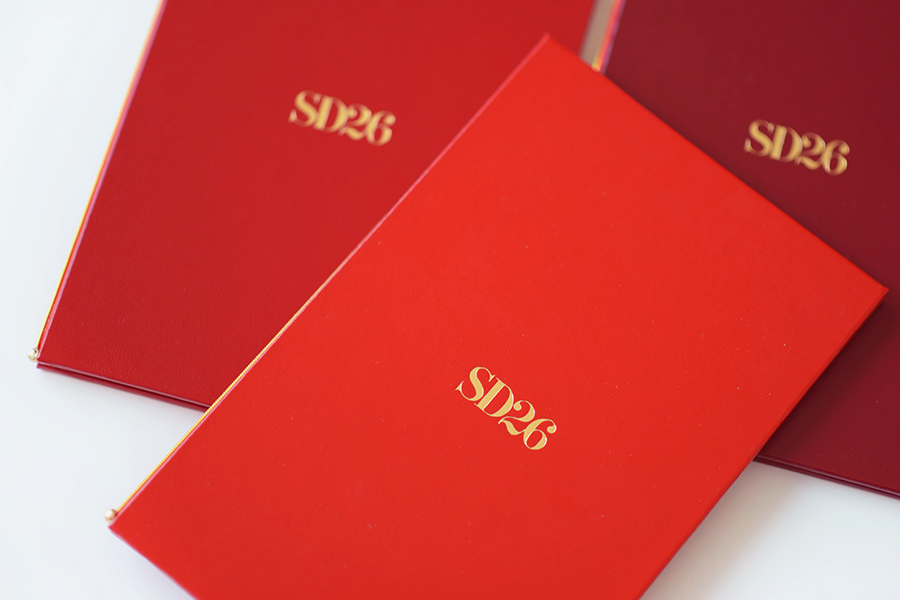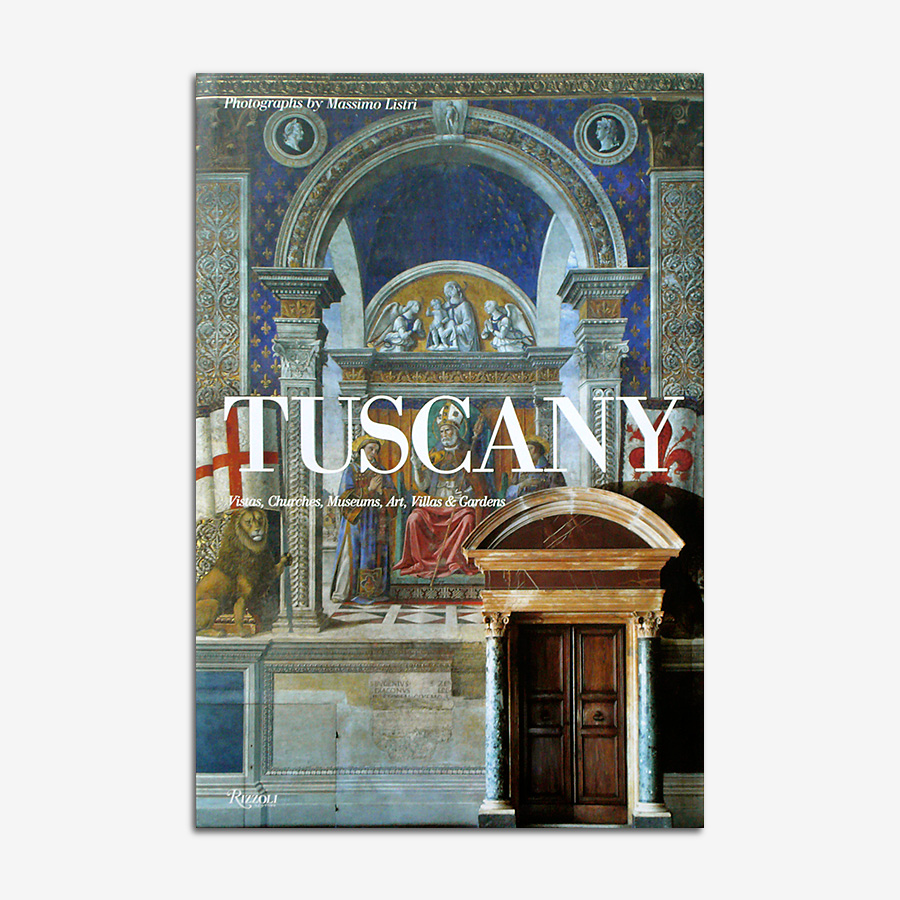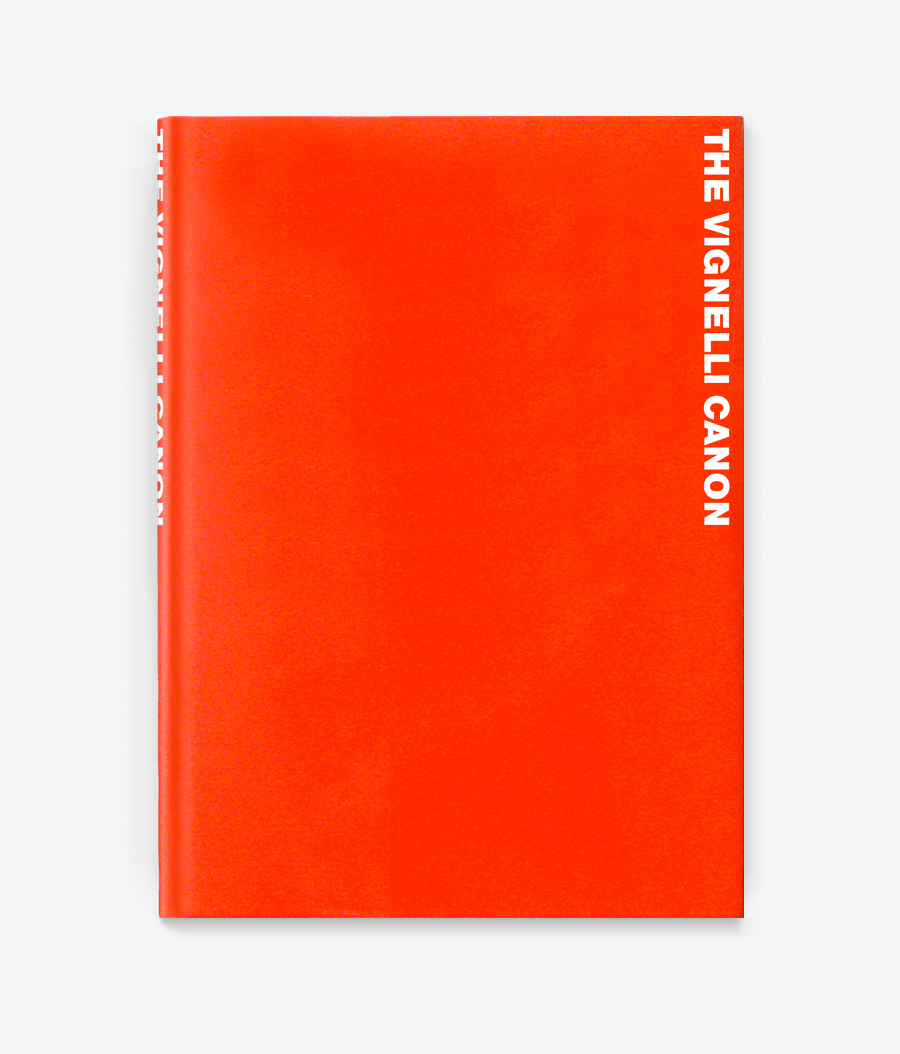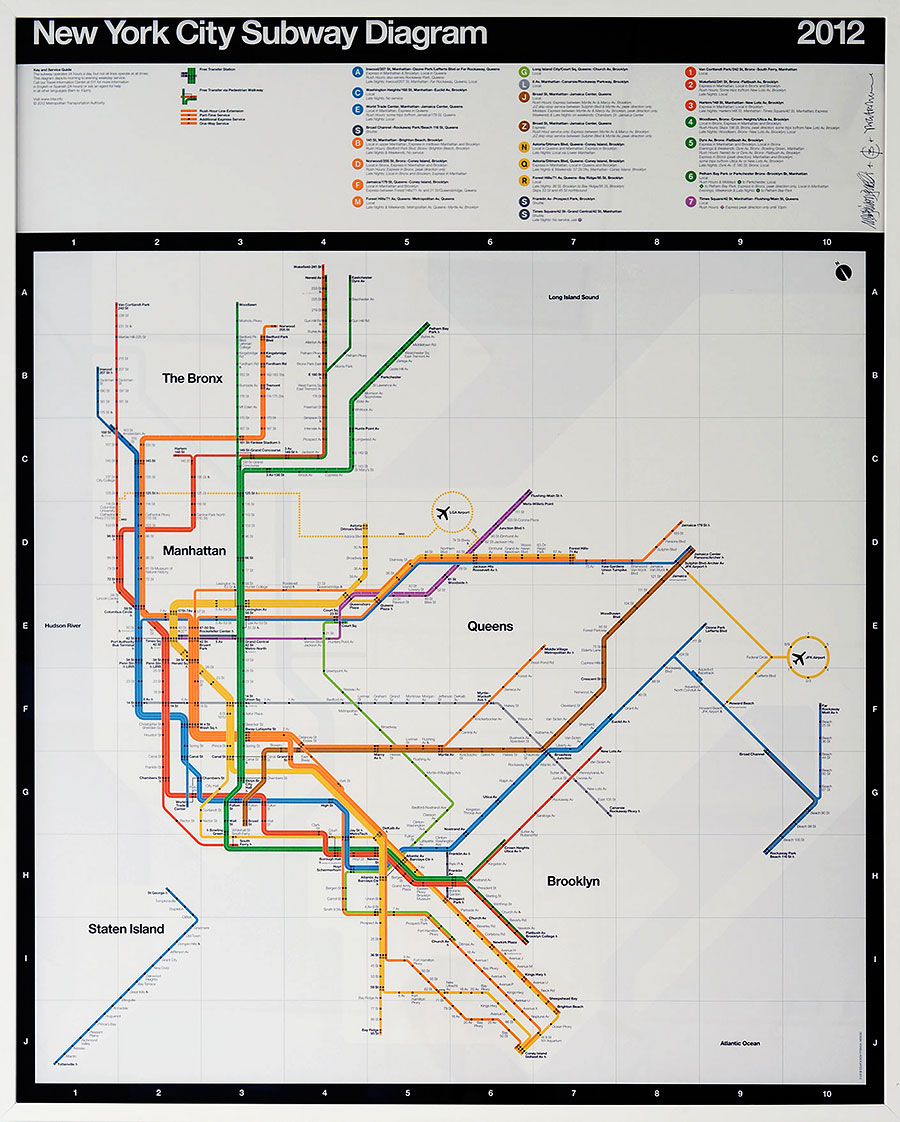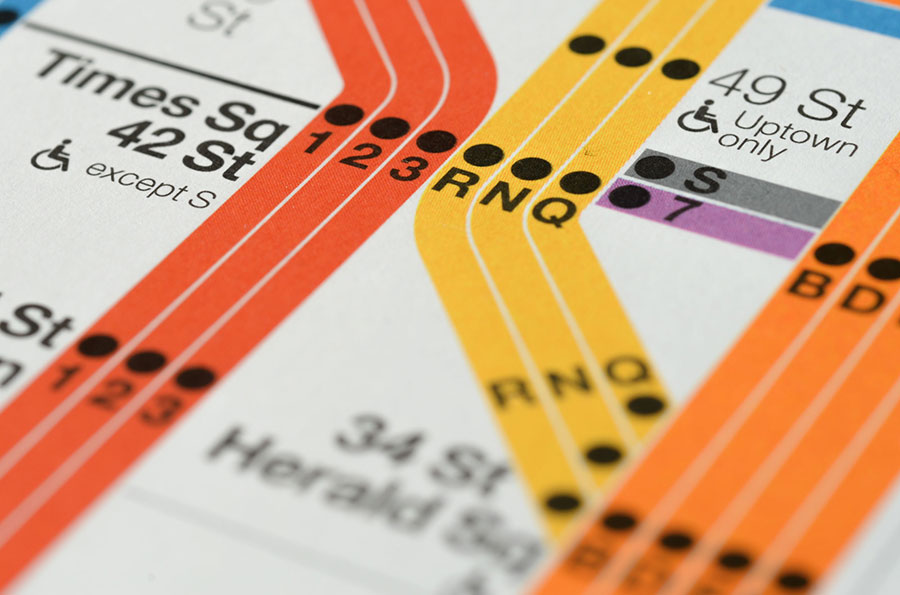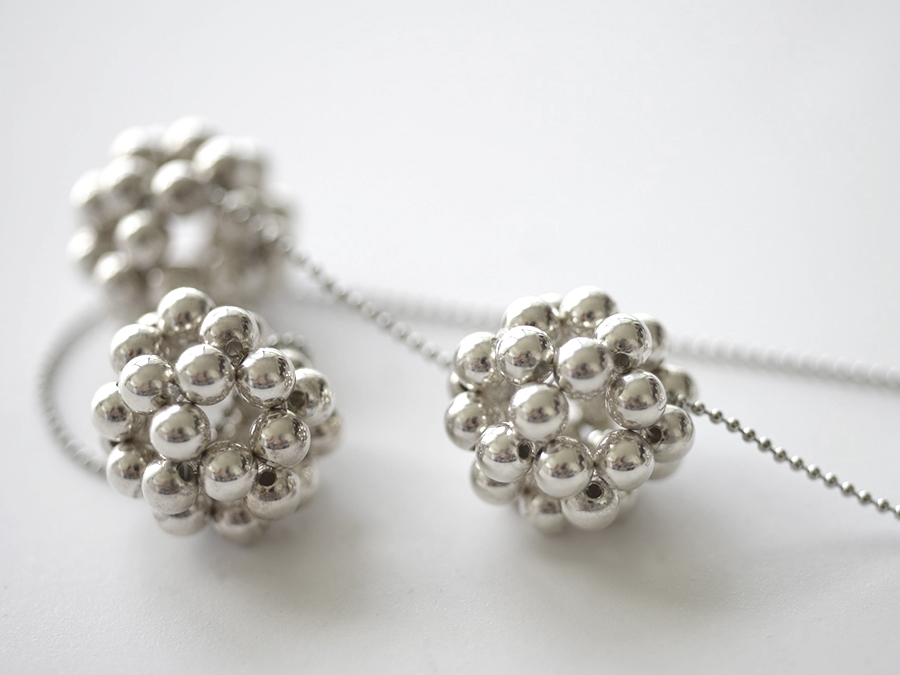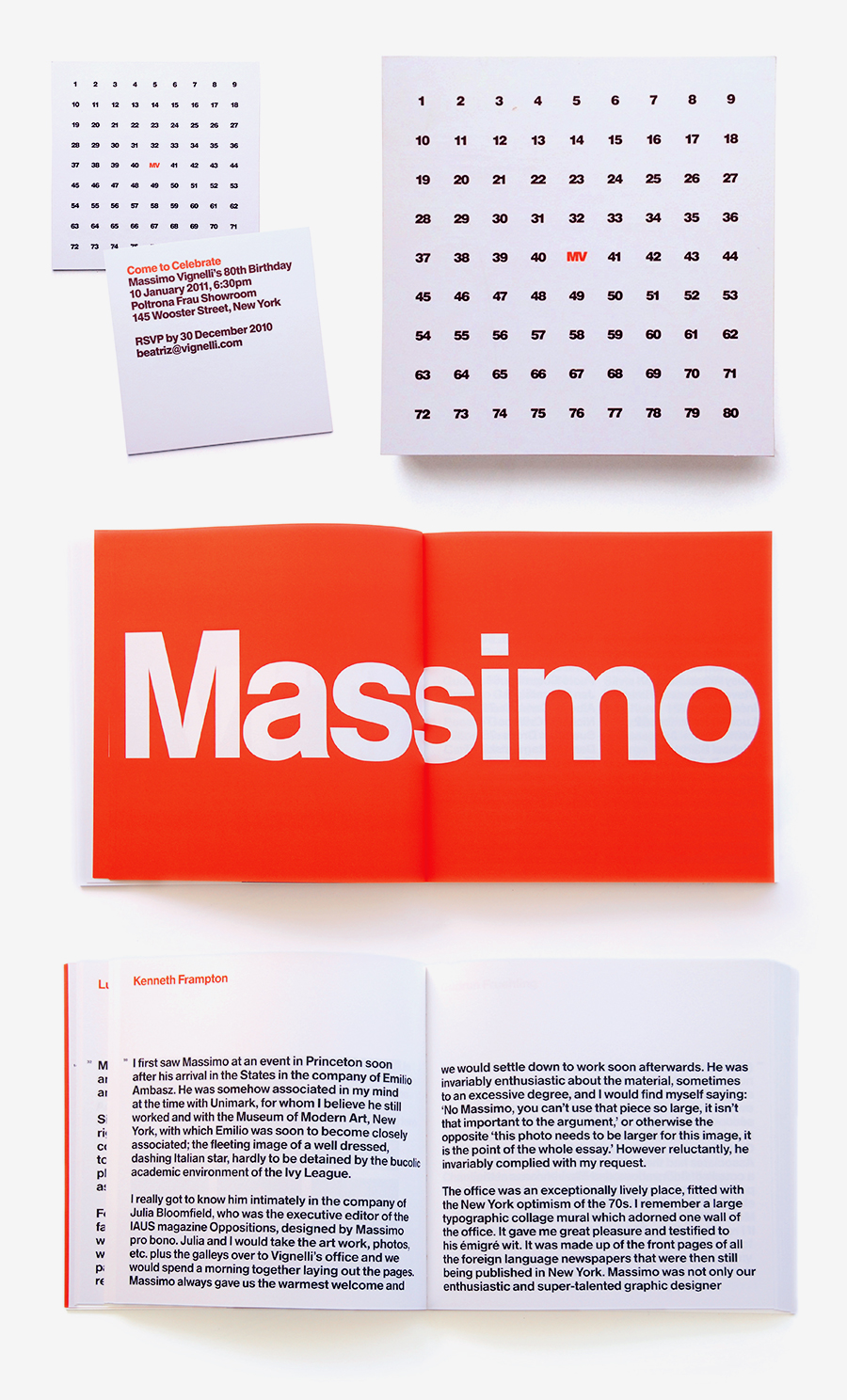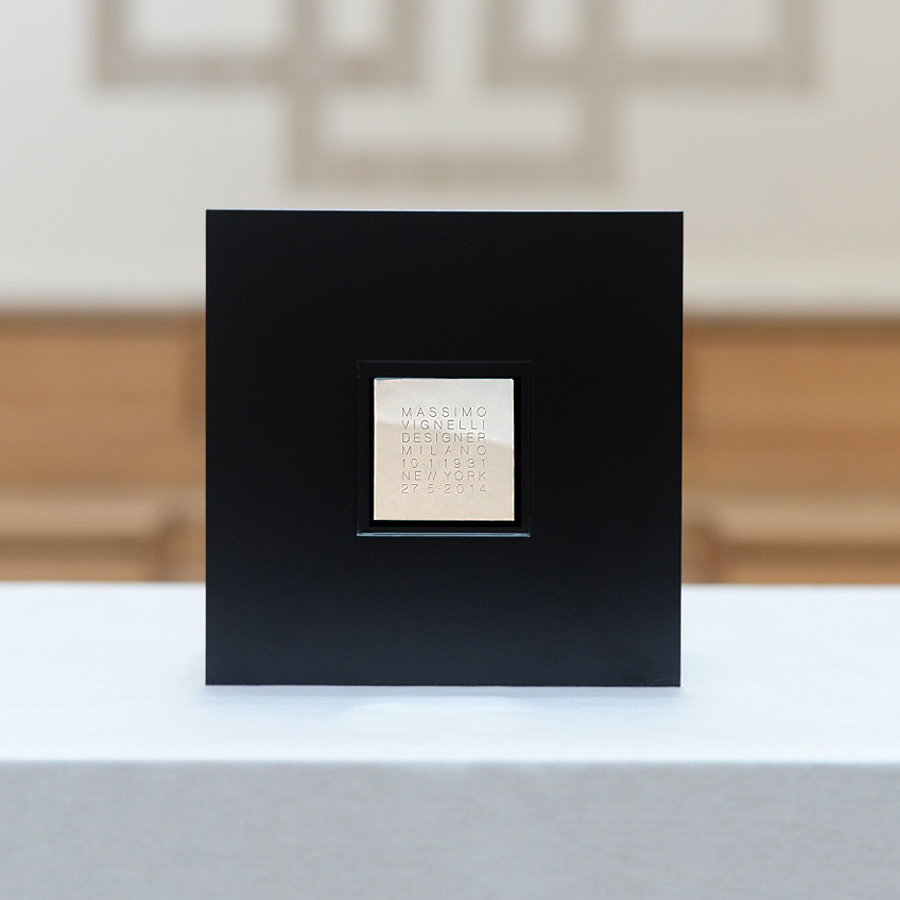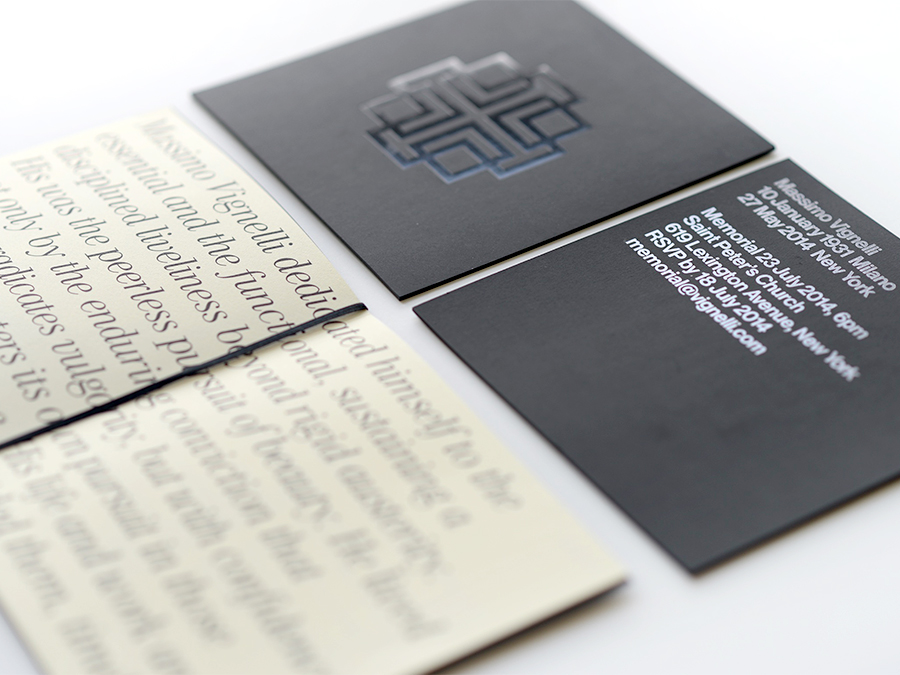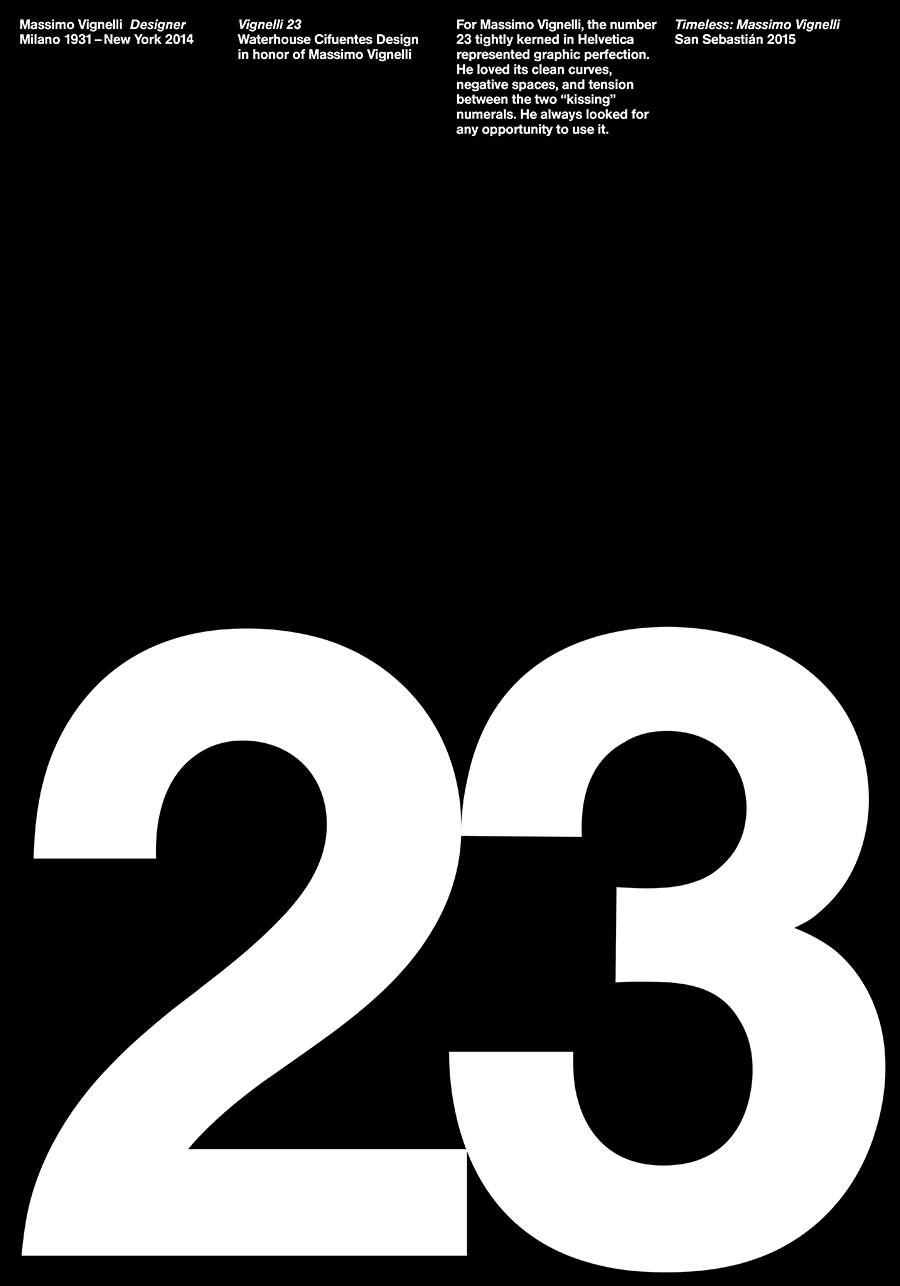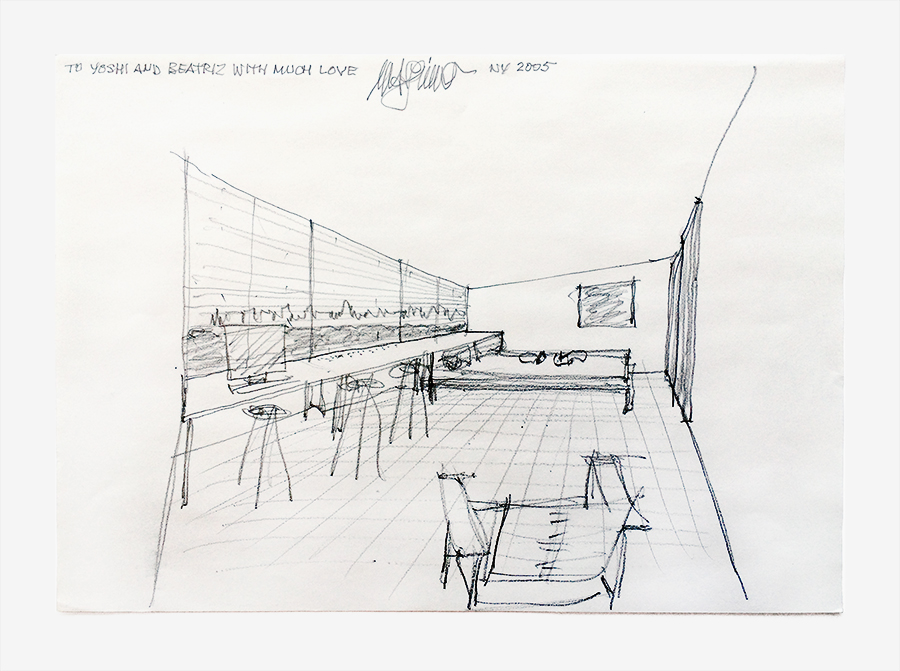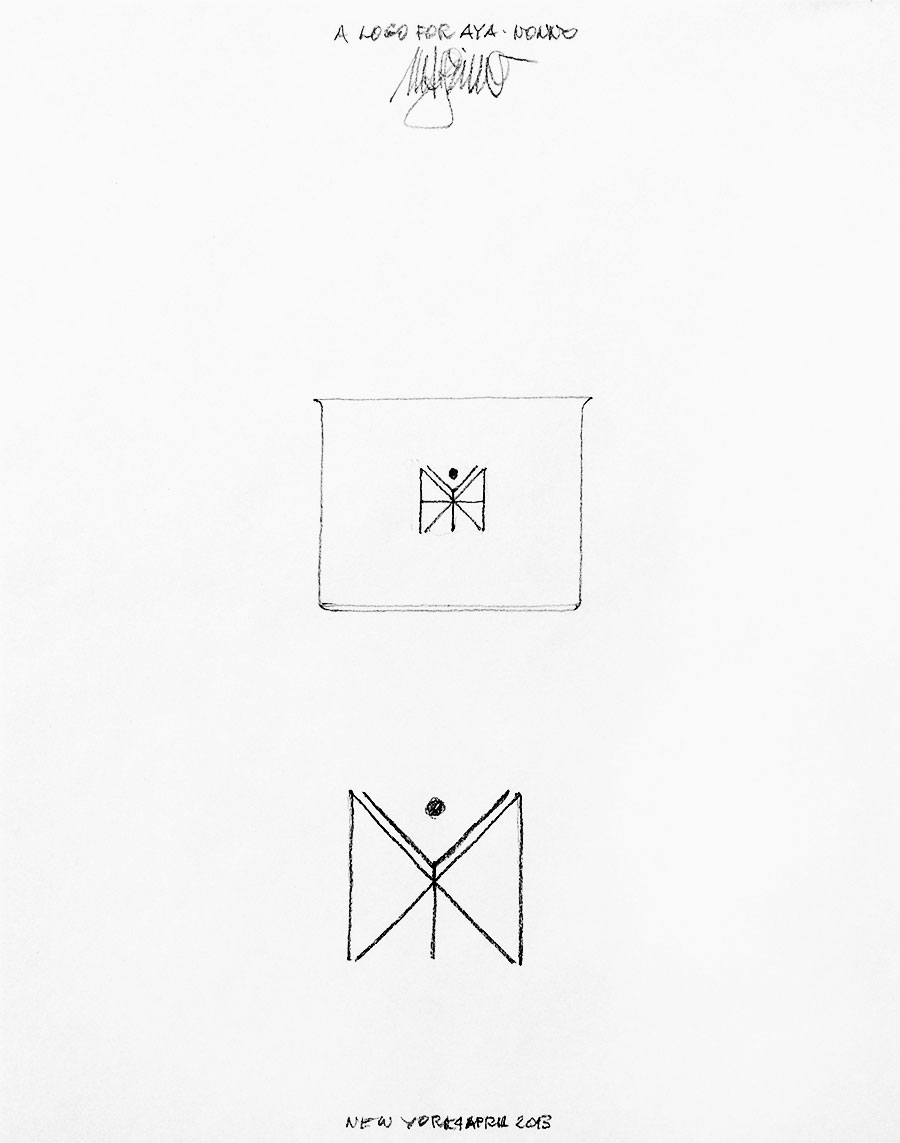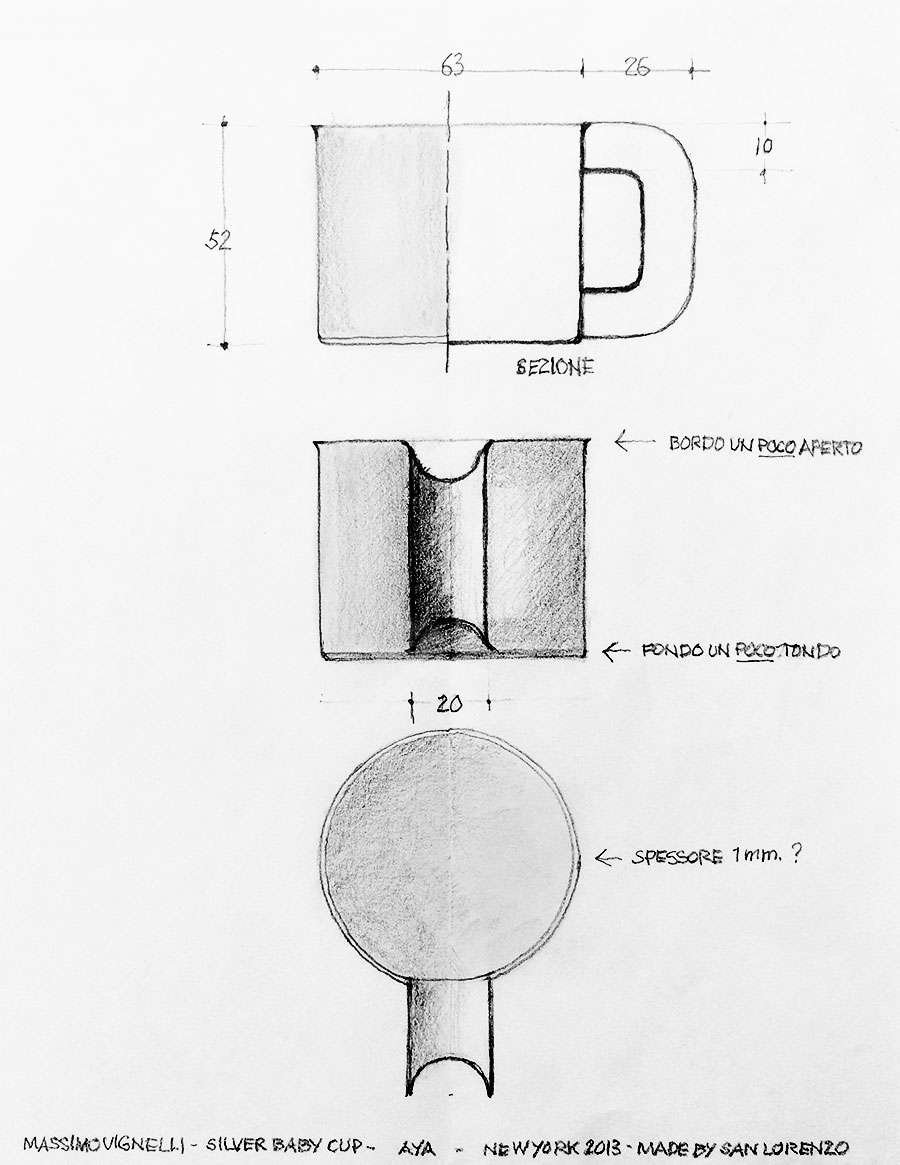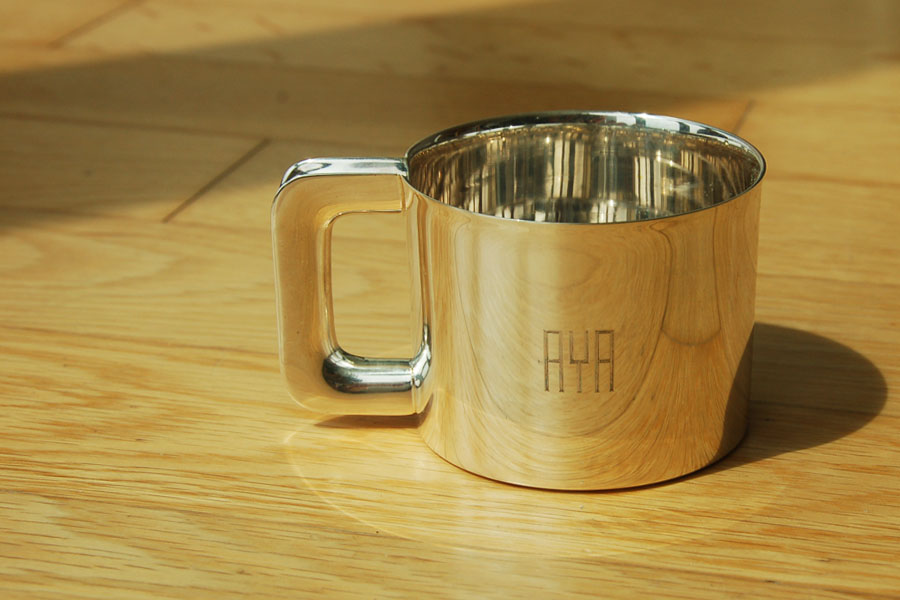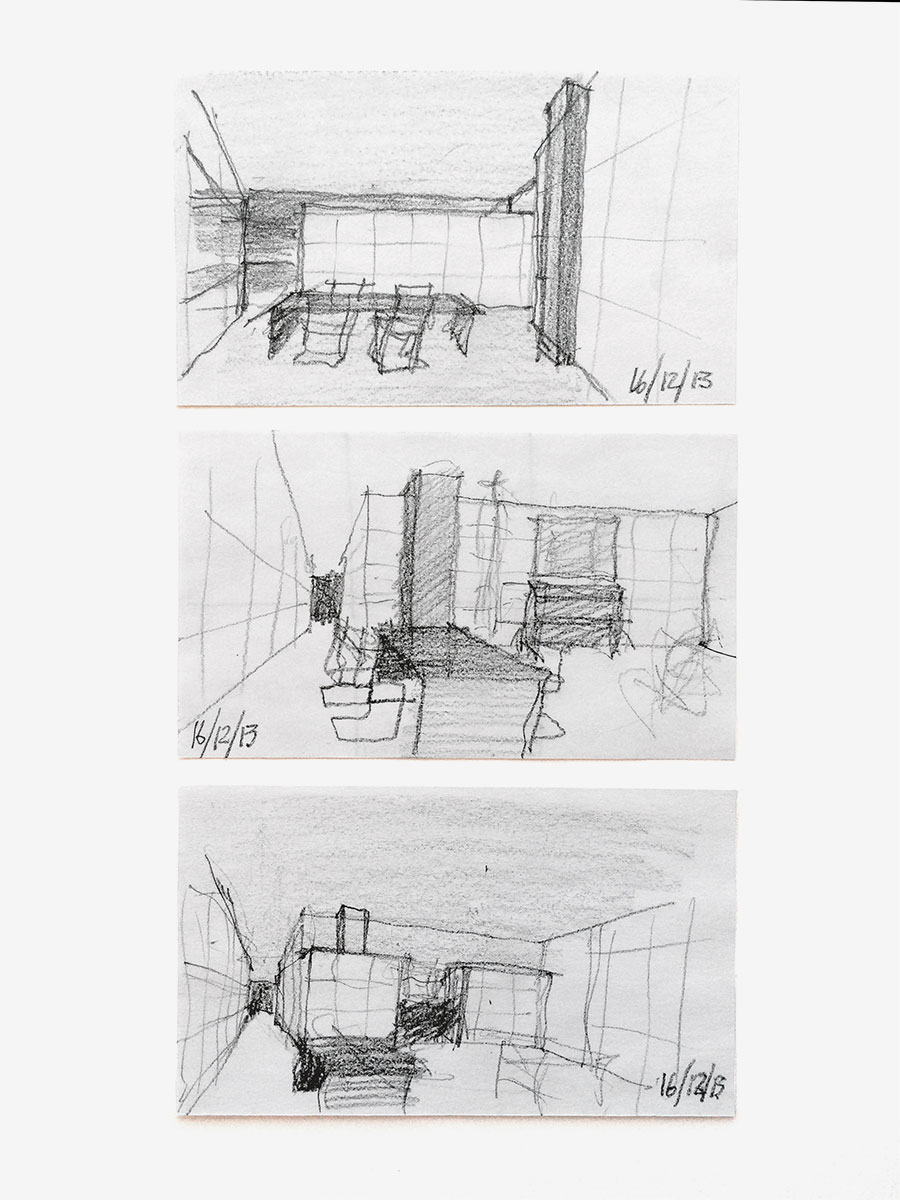The Vignelli Legacy
Introduction
I am glad and honored to share the first memoir of Massimo Vignelli written by his faithful collaborator Beatriz Cifuentes, former Vice-President of Vignelli Associates, who assisted him with passion and discipline for fifteen years.
The interview is followed by three series of images portraying works done by Massimo Vignelli and Beatriz Cifuentes together, by Ms. Cifuentes alone, and some sketches done by Vignelli for her and her partner Yoshiki Waterhouse, a former associate at Vignelli Associates.
I think that this overview of collective and solo projects offers a clear idea of the close collaboration and the mutual esteem that characterized the relationship between Massimo Vignelli and Beatriz Cifuentes from the beginning to the end.
I truly wish to thank Ms. Cifuentes for her incredible kindness and the extremely interesting contribution she brough to Designculture.
Enjoy your reading,
 TO THE TOP ↑
TO THE TOP ↑
Beatriz Cifuentes
Biography
Born in Granada, Spain, and educated in fine arts and design at the University of Granada and the Politecnico University in Milan, Beatriz Cifuentes-Caballero began work at Vignelli Associates in 1999, and in 2007 became Vice-President of Design.
Her work for a wide range of international clients includes corporate identity programs, transportation graphics, signage and wayfinding, book and publication design, product design, exhibition design, and web design.
In 2008 she worked with Massimo Vignelli on the redesign of the New York City Subway Diagram, as well as its update in 2010 for the MTA Weekender website and mobile app, and a 2012 printed poster. The recipient of a Chicago Atheneum Good Design Award, Cifuentes’ work is part of the permanent collection of the MoMA (Museum of Modern Art), New York.
In 2014, after the passing of her mentor Massimo Vignelli, she and Yoshiki Waterhouse founded Waterhouse Cifuentes Design, as well as SuperWarmRed Designs, an online platform that conceives and manufactures timeless products across multiple scales and disciplines.
All the pictures below have been kindly provided by Waterhouse Cifuentes Design.
TO THE TOP ↑
Q&A
Published Jan 1, 2016
Recorded Nov 2, 2015
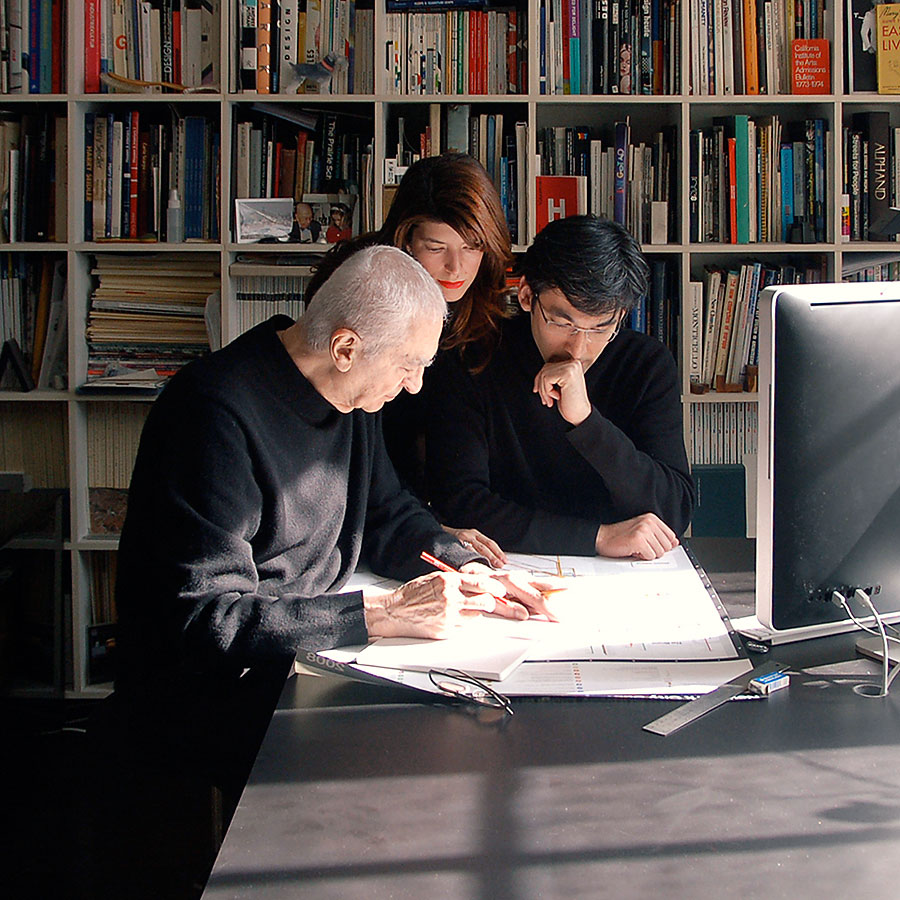 Vignelli, Cifuentes, and Waterhouse working on the redesign of the NYC Subway Diagram, 2011.
When did you start working with Vignelli? And how long did you work together?
Vignelli, Cifuentes, and Waterhouse working on the redesign of the NYC Subway Diagram, 2011.
When did you start working with Vignelli? And how long did you work together?
I arrived at Vignelli Associates in January of 1999. At that time the firm occupied a large space on 10th Avenue, but shortly afterward it moved to the Vignelli home in the Upper East Side, contracting to just a few designers. For a brief period during that transition I worked at other design offices—some of them run by Vignelli alumni—or as a freelancer. In 2004 Massimo called me back to collaborate on a project and I never left! In 2007 I became Vice-President of Design and worked closely with Massimo every day until he passed away last year.
If you had any, what kind of experiences have you had before joining his firm?
When I arrived at the office I was fresh out of the Politecnico di Architettura at the University of Milan, where Massimo had also studied decades earlier. I had only done some minor freelance work when an opportunity presented itself to go to New York and work at the Vignelli office. I prepared my suitcase and landed in New York without a word of English or much experience. Speaking Italian helped me connect with Massimo and Lella. I consider Vignelli Associates my first working experience.
What differences have you found in working with Vignelli compared to previous experiences?
Working with Massimo was unique. For him there was no difference between work and life. We worked all the time: weekends, holidays, nights. There were no real vacations, but it was exciting and playful all the time. Massimo could only think with pencil and paper, and design solutions came to him swiftly. Everything was design: a project for a client, the way vegetables were cut for a salad at lunch time, how evenly the blinds were raised. In summer months we worked from his house in Italy, a villa perched on the cliffs of the Amalfi coast with splendid views of the sea. The house was an old convent with bare white walls, high vaulted ceilings, and arched windows. Outside the walls were washed in a beautiful neapolitan pink. Massimo and Lella had completely re-designed the space and customized minimal furniture. Work and leisure were woven through design. At the office there was no brand strategy, no endless brainstorming meetings, no post-its pasted on the walls, no image collages on big boards, and no dealing with middle management. For Massimo there was usually one clear solution to a problem which would reveal itself if you simply looked carefully and intelligently. You needed a good understanding of typography, history, and production skills, but designing with Massimo was a fluid experience. It was a delight because of his warm personality, sense of humor and charisma.
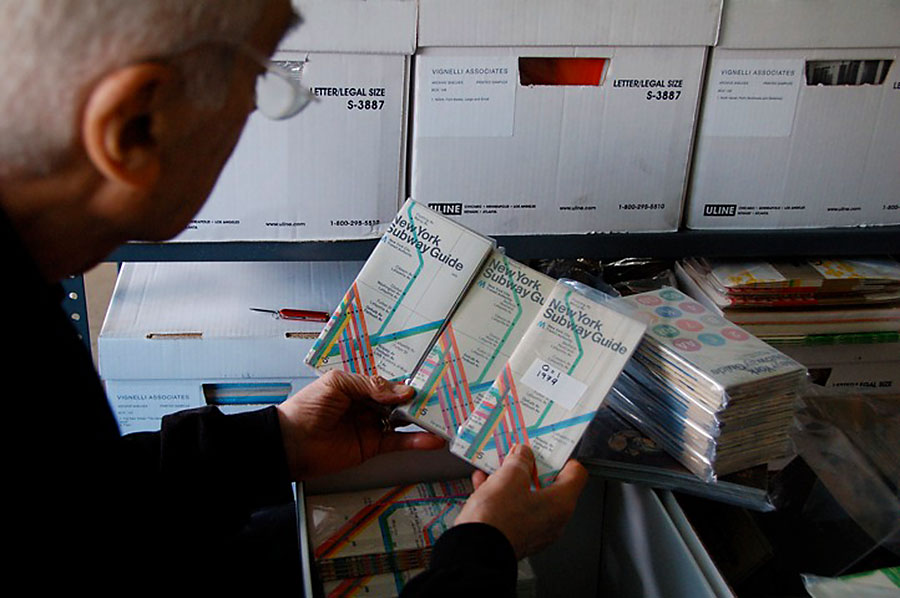 Massimo Vignelli comparing different editions of NY Subway Guide at the previous Vignelli Archives.
When and how did you discover his design? Did you like it from the beginning?
Massimo Vignelli comparing different editions of NY Subway Guide at the previous Vignelli Archives.
When and how did you discover his design? Did you like it from the beginning?
I first discovered Vignelli work studying in Milan, along with other modernist graphic designers. But as Massimo used to say: “I was not a prophet in my own land.” He never felt he was well-recognized in Italy so his work was never studied in depth at design schools. My real immersion into the Vignelli's work and philosophy came when I arrived at the office and spent many hours in the library looking at books and work, shamelessly copying everything I liked. I was mesmerized by the precision and structure of their principles.
How did you get the job?
I was not looking for it. In my home town of Granada, Spain I met Roberto Lendaro of Poltrona Frau, who casually presented the possibility of going to New York to work at the Vignelli office. I couldn’t have dreamt of such an opportunity, but it was one that opened for a second and I jumped through it. The familial relationship that I developed with Massimo over the years sometimes made me forget who I was working with and I took it for granted. Looking back now I realize how incredibly lucky I was. It changed my life forever.
What did you expect from this experience before starting it? Did you imagine that you would worked there so long?
To be honest, when I arrived at the office I had so little experience that just seeing how a big design office in New York functioned was more than enough. I was also hoping to learn some English. I had come on a three-month tourist visa, after which I was to return to Spain and perhaps find a job there. But I am still here! Massimo used to joke that Vignelli Associates was both a design office and matchmaking agency where many couples met. At the same time I arrived, a senior designer called Yoshiki Waterhouse had just started working at Vignelli. Yoshi and I have been together for 16 years and now have a daughter. Massimo always took credit for bringing us together. After Massimo’s death last year, Yoshi and I founded Waterhouse Cifuentes Design.
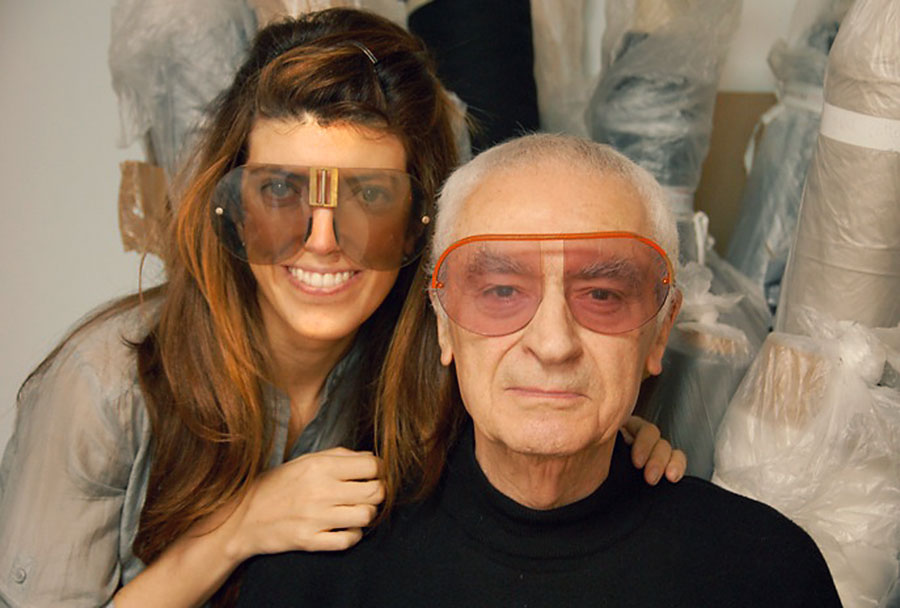 Beatriz Cifuentes and Massimo Vignelli trying old glasses prototypes at the Vignelli Archives.
What is the first project you worked together?
Beatriz Cifuentes and Massimo Vignelli trying old glasses prototypes at the Vignelli Archives.
What is the first project you worked together?
The first major project Massimo and I worked together on was the corporate identity for Abdi Ibrahim, a pharmaceutical company in Istanbul.
How was the work organized? Did you always work together? Were there any other employees?
The office schedule was quite loose, with no specific arrival, leaving time or internal deadlines. Work was a continuous dialogue that could happen at the desk, during lunch or over coffee, or even at 1am on the phone. The office was small and work was always a collaboration. Often design concepts emerged from a common dialogue through sketches, sometimes even in front of clients. Depending on the work load we would have interns or freelancers helping with production. It could be surprising for many to know that work at the office was so low-key. I remember him doing table prototypes with licorice sticks or pasta, anything at hand. Massimo had an insatiable curiosity and even tried to learn how to use the computer to “help” with production. In the last years he focused on design writing and interviews, his way of leaving his legacy to the world. I remember working together on “The Vignelli Canon” and seeing his enthusiasm for leaving a great design vision for future generations. He offered the book as a free PDF because he truly believed that aside from style and trend, every designer should share the same fundamental principles.
What difficulties have you encountered, if there were any, working with him?
After so many years working closely, Massimo treated Yoshi and me like family. And like family we had disagreements, too. The mix of work and life sometimes made it difficult to have free time or lives of our own. He even designed our home… several times. One day Yoshi and I arrived at the office showing Massimo the plan of a new apartment we had found. The next day he showed us the plan already organized and the apartment configuration designed. You felt guilty if you were not thinking about design for even a second.
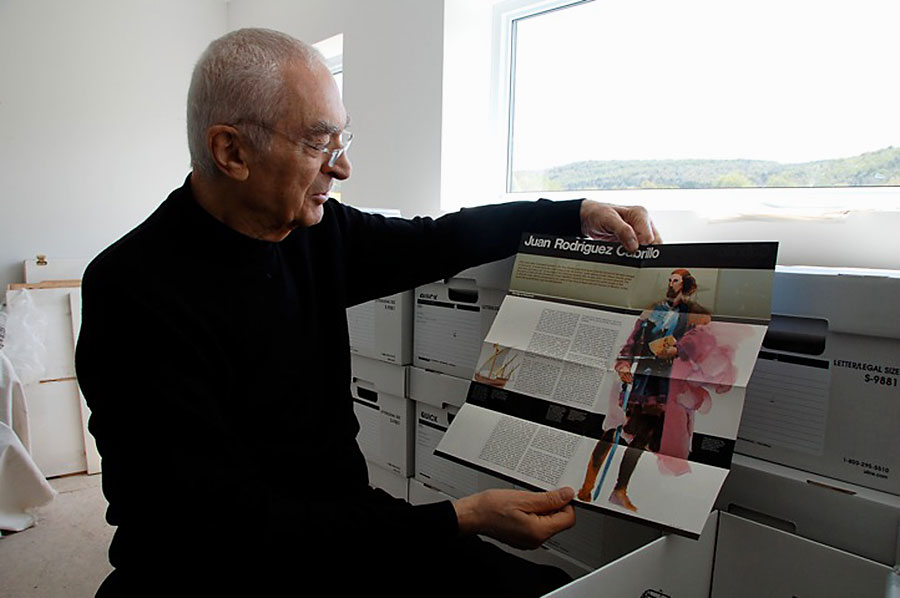 Massimo Vignelli showing a leaflet designed for the NPS (National Park Service) in 1977.
Did you gradually have a grater responsibility within the studio? In what way?
Massimo Vignelli showing a leaflet designed for the NPS (National Park Service) in 1977.
Did you gradually have a grater responsibility within the studio? In what way?
After becoming Vice President the responsibility increased. I was honored that Massimo trusted me so much. We travelled the world extensively, presenting work to clients. But during its last years the office didn't focus on hierarchies. At other design firms the difference between a junior and senior position is very important, but at Vignelli the importance was placed on the work and enjoying what you were doing. Massimo was a hard worker like no other, and never considered beneath him any step of the design or production process.
What have you learned working with him?
So many things. Actually, everything! Design touches every aspect of life. He taught me to keep my eyes open and my mind curious and alert. He taught me about elegance, the importance of responsible design and learning from the classics. I remember spending several months in 2010 perusing and organizing the Vignelli Archives with Massimo before they were sent to the new Vignelli Center at RIT (Rochester Institute of Technology). We went through every single box, folder and project. I think I learnt more about design and how a design mind works during those months than in many years of practice. Listening to the stories, the reasoning, the anecdotes behind each design was a truly enlightening experience. I saw a cross-section through Massimo’s work and realized he had remained true to his principles over many decades, an important lesson in today’s fast-paced and restless world.
What is the feature that you value most of his design?
Structure, ambiguity, and timelessness.
What is the project by Vignelli that you prefer and why?
The re-design of the New York Subway Diagram. It’s a long story, shall I tell you?
Yes, please.
Massimo and I used to have a ritual every afternoon in which we stopped whatever we were doing to have coffee in the kitchen. Many of the most interesting conversations happened at that time. I used to ask him: Massimo, if you could revisit only one of your designs and improve it, which one would it be? Without hesitation he always answered: “The New York Subway Map”. I encouraged him many times to do it together internally, just for fun, arguing that with the computer it would be much easier. But we were always so busy and never had the chance until 2008, when a proposal by Men’s Vogue to reprint the 1972 Vignelli subway map caused us to offer them a redesign from scratch. Massimo, Yoshiki, and I worked together for months to rebuild the design’s form, incorporating up-to-date nomenclature and colors, while improving many other details. A crucial change was to rename it “diagram” to avoid literal comparisons with real geography. We also had major fights about some decisions! But those were months of pure design bliss. A limited-edition poster was sold in a matter of hours with profits to charity, ultimately reigniting the debate over the current New York subway map and Vignelli’s. In 2010 the MTA (Metropolitan Transit Authority) asked us to revise the diagram for The Weekender, a new website that informed customers about the subway system’s planned service changes, and that became the MTA’s homepage on weekends. In 2012 a limited edition poster of the diagram used in The Weekender was printed and a very small number was signed by the three of us. Massimo was always generous giving credit and always recognized our essential role in bringing this project to reality.
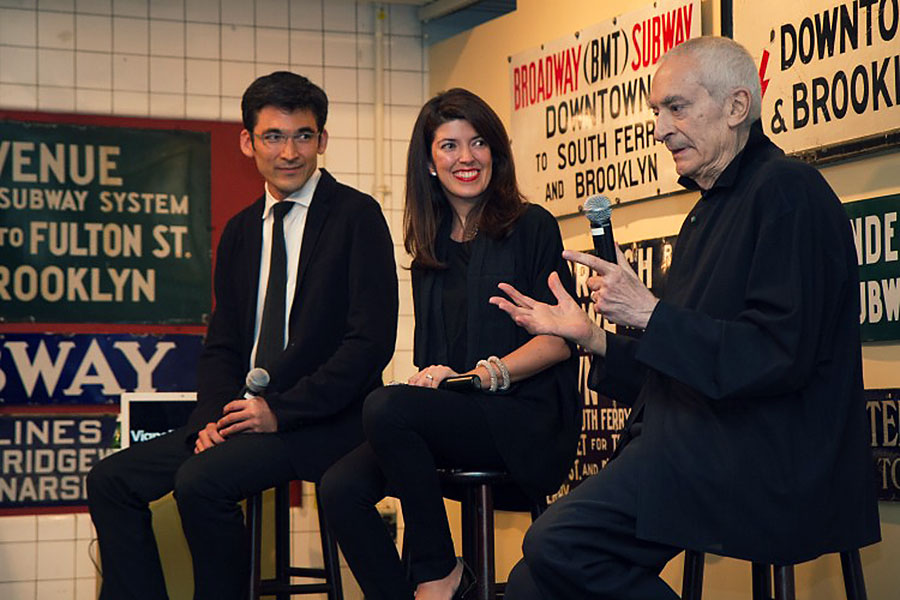 Waterhouse, Cifuentes, and Vignelli giving a lecture about the NYC Subway Diagram’s redesign, 2012.
How do you propose yourself to perpetuate his legacy?
Waterhouse, Cifuentes, and Vignelli giving a lecture about the NYC Subway Diagram’s redesign, 2012.
How do you propose yourself to perpetuate his legacy?
After working with Massimo for so many years, his death was not only an emotional shock but a professional one. What to do next? We didn’t see ourselves fitting in another office so the only choice was to start our own firm. We also had clients who needed to continue work that was ongoing so we made a smooth transition. When Massimo downsized the office from a big space with many designers to his apartment with just a few, he used to say that we had gone from a bus to a Ferrari; Yoshi and I now like to think we've gone from a Ferrari to a Vespa! It has been an interesting year, a combination of the unknown and excitement for the future, because we want to show what we are capable of doing in addition to all we have learnt from our great mentor. We have happily been in the shadow of our maestro over the course of fifteen years. Now, it is rewarding to produce work with the same philosophy and approach to work and life, but with our own voice. Many times we stop and say: “What would Massimo have done?” or “Massimo would have loved this!” We imagine his broad smile so often. Lately we have been invited to speak about Massimo and our experiences working with him. In homage, we present examples and anecdotes that reveal his personality, idiosyncrasies, approachability, and of course design philosophy. It is particularly wonderful to relate his personality to future generations: Massimo always dreamt of being immortal, and remembering him is a good way.
What kind of contribution do you want to bring with your own new firm?
One of our aims is to uphold the use of fundamental tools of design—proportion, structure, hierarchy, etc. Regardless of time and trends, these are foundations of clear communication and ought to be preserved. That doesn’t mean design has to be conservative or repetitive. We want to build upon the timeless principles of Vignelli design philosophy, and in some cases even deliberately subvert it.
What is SuperWarmRed Designs? And what kind of items it will offer?
SuperWarmRed Designs is an online platform that conceives timeless products across multiple scales and disciplines. For now we have a very limited inventory, but a very important one: you can find the limited edition of the 2012 New York Subway Diagram, even the signed ones, through the website. We plan to expand in the near future and welcome collaborations.
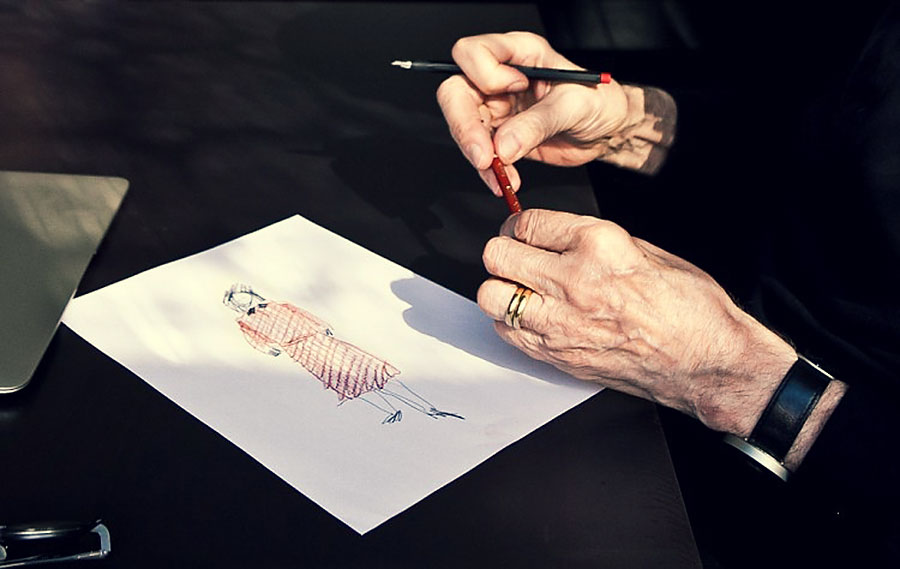 Massimo Vignelli drawing at his desk.
When it will be published the new book “Design Vignelli”?
Massimo Vignelli drawing at his desk.
When it will be published the new book “Design Vignelli”?
Next year. This is a book that Massimo and I began many years ago. We worked together on the design and content for a long time but had always prioritized client work, so our efforts were on and off. In the months prior to Massimo’s death he asked me to finish and publish the book. Massimo’s initial idea was to design it as the second part to the “Design: Vignelli” red book published in 1990. After his passing, the publisher Rizzoli felt it would be a good idea to make a more in-depth volume: not just part two but a “complete works” monograph. Since the red book is out of print and almost impossible to find, the idea is to create a reference Vignelli book. There is so much material to go through, edit, and organize. People are showing great interest in knowing the Vignelli process so there will be a section dedicated to it.
Thank you very much.
Thank you.
© 2015-16 Beatriz Cifuentes-Caballero, Nicola-Matteo Munari. All rights reserved.
TO THE TOP ↑
Massimo Vignelli & Beatriz Cifuentes
Portfolio
Richard Meier Architect, Vol. 4, 5, 6
Books, 25.5×25.5 cm
2004-14
From the acknowledgement written by Richard Meier: “Working with Massimo is always a pleasure, and with him is Beatriz Cifuentes, the person who has been responsible for executing the detailed layout of every page. For her dedication I am extremely grateful.” Published by Rizzoli, New York.
Abdi Ibrahim
Mark for a pharmaceutical company, Turkey
2006
Abdi Ibrahim
Packaging prototypes for Abdi Ibrahim
2006
Abdica
Packaging prototypes for a branch of Abdi Ibrahim, Istanbul
2009
CorpGroup
Mark for a Chilean banking group
2006
Established in 1871 in a small neighborhood in Santiago, CorpBanca is the oldest bank in Chile. In 2004 it took a major step towards internationalization and became a holding with subsidiary groups: CorpBanca, CorpVida, and CorpArtes.
BK Italia
Corporate identity porgram for an Italian furniture brand
2007
Vignelli: From A to Z
Hardcover Book, 23×17 cm
2007
The picture portrays the copy of Beatriz Cifuents with an inscription by Massimo Vignelli. The book quickly acquired a cult status and became an extremely rare-to-find design icon. Published by Images Publishing, Australia. The A-Z inscription reads:
Acknowledgment to
Beatriz
Cifuentes
Designer
Exquisite
For
Giving
Her
Infinite
Love
Mastering
Non
Objective
Photographs
Quality &
Resolutions +
Silly
Texts
Under
Vignelli’s
Zeitgeist
Bodrum Houses
Richard Meier Museums
House and Apartments
Complete Works
Books, 31.5×31 cm and 39×30.5 cm
2007-08
“These books follow strict typographic guidelines and cinematic layouts. Undisturbed by the minimal layouts, the content speaks for itself,” Beatriz Cifuentes.
Feudi di San Gregorio
Spumanti Labels
2006
In the heart of Campania, Italy, this winery produces award-winning wines and spumanti. Their graphic identity follows established guidelines based on minimal labeling and fine materials. The double-square identity is consistently applied, though its interpretation changes with each product line. The picture portrays DUBL+, DUBL Rosé, and DUBL Brut.
Feudi di San Gregorio
Wine Labels
2008
Another series of Feudi wine labels. The picture portrays Aglianico del Vulture and Primitivo wines.
Feudi di San Gregorio
Italian Wine Labels
2010
In this series of Feudi wine labels the top square becomes a circle. The picture portrays Pietracalda, Serrocielo Falanghina, and Cutizzi Greco di Tufo.
SD26
Restaurant Identity, New York City
2009
The graphic identity for SD26 (San Domenico 26)—an upscale Italian restaurant in New York City—is expressed in menus, receipts, signage, advertising, tableware, brochures, website, and communication materials. Daily menus are carefully typeset. The interior of the restaurant was designed to preserve the elegant atmosphere of its predecessor in a modern space. The logotype’s typeface is a photostat’s Didot from “Lettera” (Niggli, 1954).
Tuscany
Hardcover Book, 43×28 cm
2010
An illustrated, large size book of photographs by Massimo Listri covering churches, museums, art, villas, and gardens. “Large scale reproductions reveal new emotions to the readers. The use of large scale details adds drama to the sequences of pages,“ Massimo Vignelli. Published by Rizzoli, New York.
Woolworths
Mark for the largest department store in South Africa
2010
Woolworths “Waterstone” Flagship Store, designed by Vignelli and Cifuentes, was awarded the 2014 Grand Prize for Design from the ARE (Association of Retail Environments).
The Vignelli CanonSoftcover Book, 21×15 cm
2010
Published by Lars Müller Publishers, Switzerland. The book is downloadable as a free PDF from
Vignelli Design website.
NYC Subway Diagram 2012
Poster, 114×91.5 cm
2012
The NYC Subway Diagram was designed in 2010 by Massimo Vignelli, Beatriz Cifuentes, and Yoshiki Waterhouse. Using concepts from Vignelli’s iconic Subway Map design of 1972, the new diagram was informed by satellite data and rebuilt for greater clarity and legibility. Revised to reflect the current subway system, colors, and nomenclature, it is used by the website and mobile application of the MTA (Metropolitan Transit Authority). A 2012 poster of the diagram was recently acquired by the MoMA (Museum of Modern Art), New York, for its permanent collection.
Beatriz Cifuentes
Portfolio
Esfera Jewels
Mark for self-designed jewels
2004
Esfera
Silver Necklace
2004
Massimo Vignelli 80th Birthday
Invitation card and celebratory book
2011
Cifuentes and Waterhouse designed and organized a surprise 80th birthday party for Massimo Vignelli at Poltrona Frau headquarters in New York City. All graphics were treated like a complete identity project: a numbered logo, printed invitations, a commemorative book, exterior and interior signage, and even a ‘branded’ cake. The event was covered in a full-page article in The New York Times (see the Links & Docs at the bottom of the page).
Massimo Vignelli 1931-2014
Urn, 30×30×30 cm
2014
Urn for his own ashes designed by Massimo Vignelli. Manufactured by Ghianda. (Photo: Courtesy of Beatriz Cifuentes. Previously unseen on the internet.)
Massimo Vignelli Memorial
Invitation card and booklet
2014
From the booklet: “Massimo Vignelli dedicated himself to the essential and the functional, sustaining a disciplined liveliness beyond rigid austerity. His was the peerless pursuit of beauty…”
Vignelli 23
Tribute Poster, 100×70 cm
2015
Designed by Cifuentes and Waterhouse for an exhibition in homage to Massimo Vignelli in San Sebastián, Spain.
“For Massimo Vignelli, the number 23 tightly kerned in Helvetica represented graphic perfection. He loved its clean curves, negative spaces, and tension between the two ‘kissing’ numerals. He always looked for any opportunity to use it.”
Vignelli for Waterhouse & Cifuentes
Portfolio
Sketch for Cifuentes and Waterhouse apartment, 2005. Previously unseen on the internet.
Mark designed for the 1st Birthday of Aya Waterhouse-Cifuentes, 2013. Previously unseen on the internet.
Sketch for Aya Silver Baby Cup, 2013. Previously unseen on the internet.
Aya Silver Baby Cup, San Lorenzo, 2013. Previously unseen on the internet.
Sketches for Cifuentes and Waterhouse apartment, 2013. Previously unseen on the internet.
© All rights reserved for all the pictures in this page.
TO THE TOP ↑
Links & Docs
Articles
Designboom SuperWarmRed Design
NY Times Happy 80th
Profiles
SuperWarmRed Designs Official Website
Waterhouse Cifuentes Design Official Website
Projects
BK Italia Massimo Vignelli
MTA Weekender
Timeless Tribute Posters Exhibition
Vignelli Associates The Vignelli Canon
Social
Facebook Waterhouse Cifuentes Design
Twitter Yoshi & Beatriz
TO THE TOP ↑
Comments
If you wish to add a comment please feel free to write at
info@designculture.it
TO THE TOP ↑
Follow on Facebook
Partnerships

Archivio Grafica Italiana is the first digital resource to the Italian graphic design heritage. Founded by Nicola Munari in 2015.

Design consultancy based in Piacenza, Italy. Founded by Nicola Munari in 2015, it operates in the whole field of design.
TO THE TOP ↑
© 2013-16 Nicola-Matteo Munari. All rights reserved.







